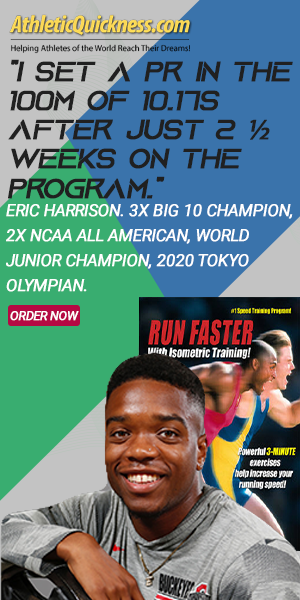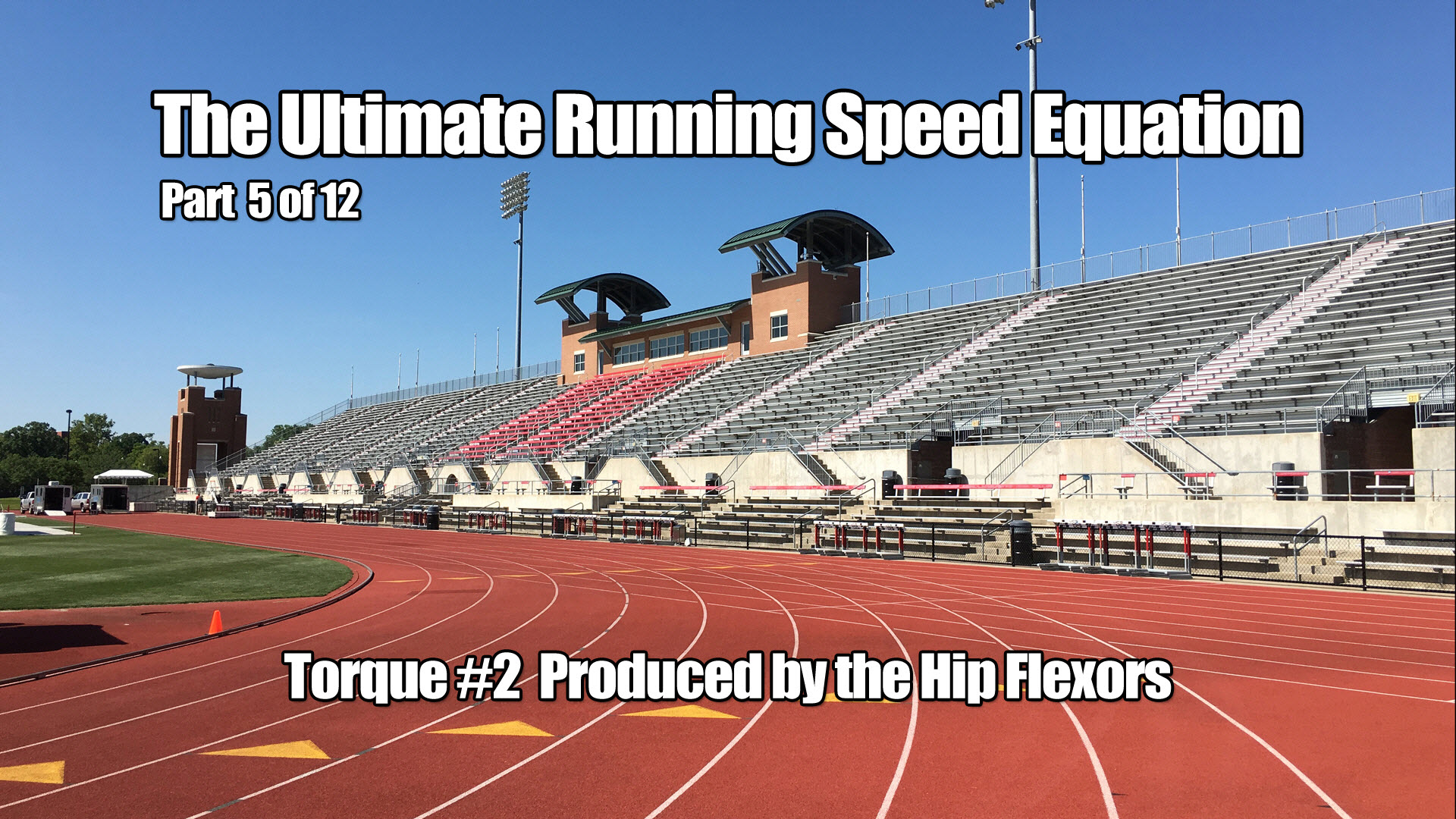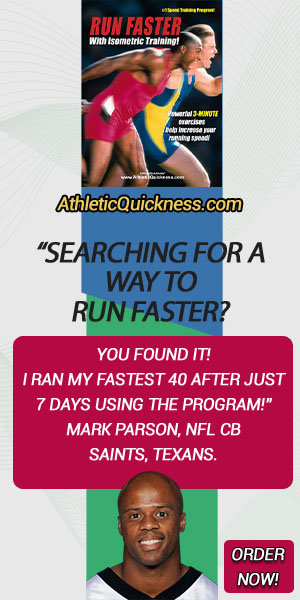If you think you know the hip flexors, well then, think again. The hip flexors are more than just another muscle group to consider exercising as a way to get faster… so much more. In this article I am going to blow the secret wide open about the most critical role of the hip flexors such that when we are finished, you’ll never be the same (in a good way!) and begin to realize they hold the key to your athletic success. Now, that’s something to get excited about, right?!
More Than Just the Psoas
Okay, let’s start with something you may already know, such as the psoas is a hip flexor muscle that needs to be stretched and strengthened to help you get faster. Most people seem to understand this, but sadly, that’s where their knowledge on this muscle usually ends. So, let’s continue on.
Now, if you didn’t know, let me tell you that there are other muscles that flex the hip besides the psoas. Actually, there are six more. These muscles, together, thrust your thigh up on the pelvis, forward, helping you run. But even knowing this isn’t that big of a deal.
Top Scientists Don’t Even Know
Here’s where it starts to get a little exciting and perhaps, takes you further along the path of information that maybe you didn’t know. The hip flexors do something else in your body that helps you run, walk, jog and sprint better that not even the top scientists in the world know they do. Would you like to know what that is? I thought you might.
Okay, good. The hip flexors also create a torque, or, a rotational force around the body, but, it’s way more than just that. Of all the rotational forces produced in the body when you walk, jog or run, the one produced by the hip flexors is the only one that travels in the opposite direction to those created by the rest of the body.
This means that it is the only stabilizing torque produced in the body and without it, we’d all just spin around in a circle like a figure skater on ice whenever we tried to move! Okay, so maybe that’s not as exciting as you were thinking. Well, let me try to phrase this another way.
Your Hip Flexors Are the Pacesetter for How Fast You Can Run
How would you like to know that you can put in all the training you want in the gym or at the track but if you ignore your hip flexors, you’re still leaving a whole lot of speed ‘on the table’. It’s true. You can live under a squat rack and crank out as may squats and deadlifts as you want to build your glutes and hamstrings but you still won’t run your best until you take care of your hip flexors? Yes, this is true.
So, if your hip flexors are weak, that’s where your speed will plateau and if you want to break through your speed plateau, you’ll need to strengthen these muscles.
The way this works has to do with creating a rotational, or, torque balance in the body at the highest strength level possible and your hip flexors really hold the magic key to this balance since they always work alone and are usually ignored in ones training regimen. You’ll learn more about this starting with the remainder of this article as well as the ones that follow.
Now, this is something that should excite you because if we can just unlock your full hip flexor potential, we can raise your performance level. But, before we even talk about training strategies, I still need to explain in detail to you the role the hip flexors have in running. Because without a proper understanding, or, respect for these muscles you might give up before you even try and I certainly don’t want that to happen.
So, let’s talk about this ever-special Torque #2 coming from the hip flexors.
Torque #2 From the Hip Flexors
The second torque your body must produce in order for you to run your best will come from the leg that is off the ground, and in our example here, it is the left leg. See Figure 1

Now, looking at it on our female athlete I want you to once again, imagine it is the only force acting on her body. We see then that because it has been thrust out in front of her, which is a function of the hip flexor muscles shown in Figure 2 below,
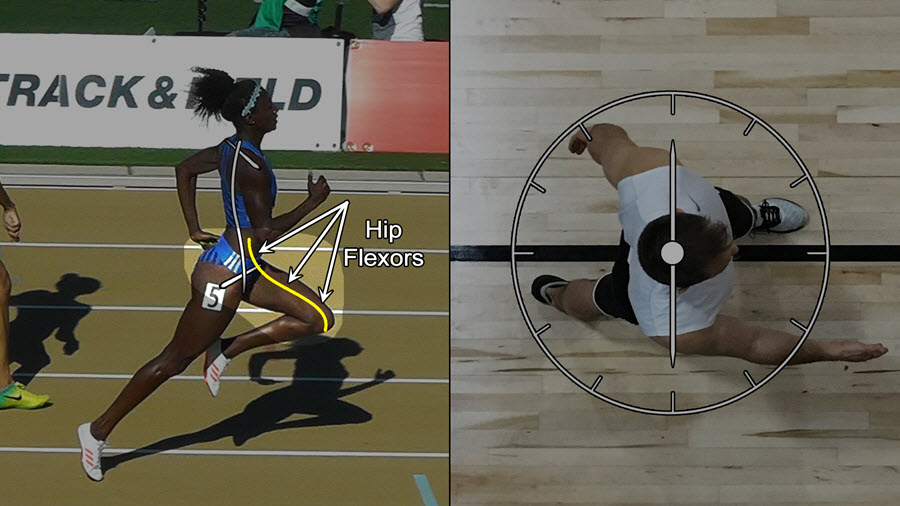
it will exert not a pushing force this time, but rather, a pulling force on the left hip, forward, in this direction as depicted by the white horizontal arrow. See Figure 3.

And yes, just like there was a vertical component to the force produced by the glutes/hams, quads and calves there is a similar one to this force as well, shown by the red arrow. See Figure 4.

But to remain consistent, and to make things easier for you to follow, I am going to show the net result of these two components with just one simple horizontal white arrow as before. See Figure 5-5.

Now, again, if this was the only force acting on the body, do you think the effect of it would be to simply pull her straight forward, or, do you think there might also be some additional reaction? Well, the only way this force causes her to move straight ahead, and in no other direction, would be if it were acting along her midline, over here in Figure 6 shown below,

but that’s not the case. So, since it’s displaced away from it, again seen in Figure 7, below,

It would not only pull her forward, but would also cause her body to twist, or, rotate. Again, it would have to because it does not fall along her midline where her center of gravity lies. So, if she does rotate, the question then, is, which direction would it be? Clockwise, or, counterclockwise? To help you see this better, let’s look at this from above on our male athlete.
The same force on our female athlete pulling her left hip forward can also be shown pulling on our male athlete’s left hip shown in Figure 8 below.

So, as the force pulls forward on this vertical line that represents the level of his hips, we can see where it will try and rotate it in the… what direction? Care to take a guess? If you said the clockwise direction, then good job, you are correct and let’s show it by the direction of this yellow arrow. See Figure 5-9.
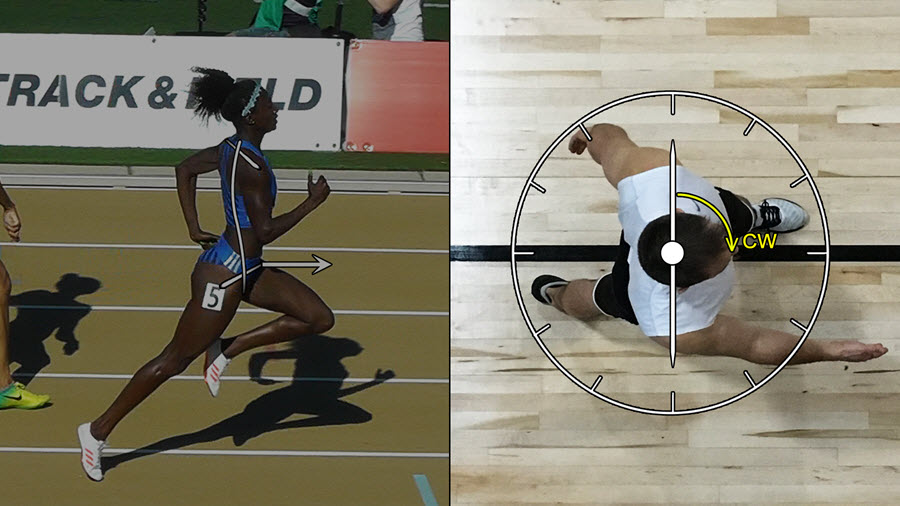
And now let’s go ahead and place the corresponding clockwise arrow showing this torque, or, rotational force on our female athlete and perhaps now you can envision this one taking place a little better. See Figure 5-10.

So, the role of the hip flexors in running is to produce torque. As we continue, you’ll soon realize this torque acts along, or, against all the other produced in your body. This is how we stay in balance, i.e., walk, run or jog in a straight line for without it, we really wouldn’t be able to move about properly.

